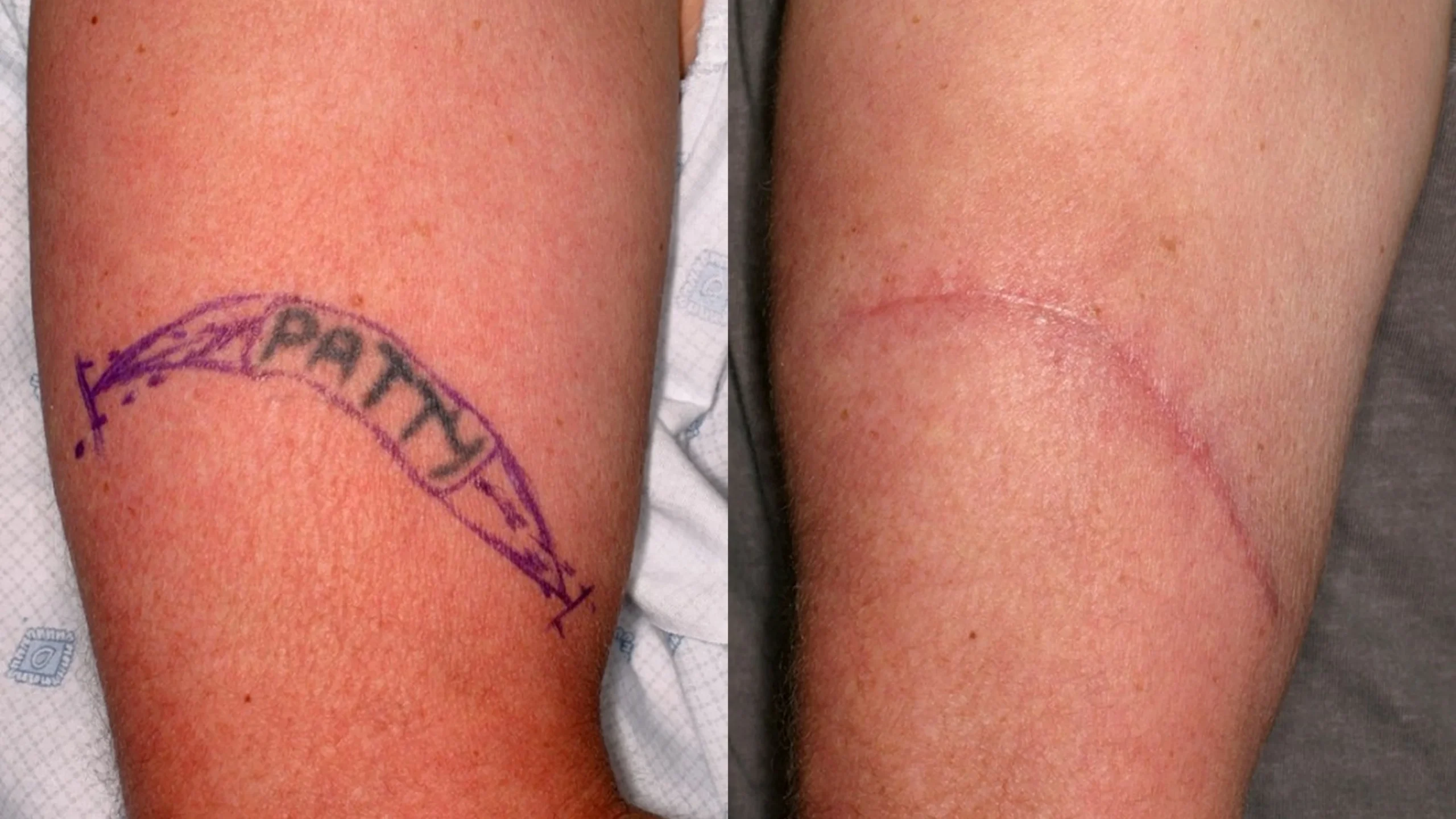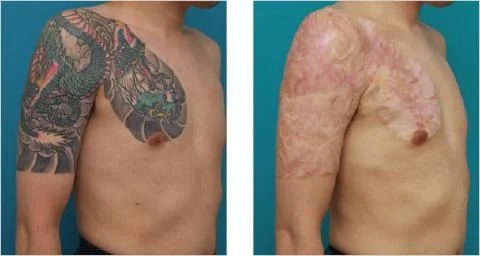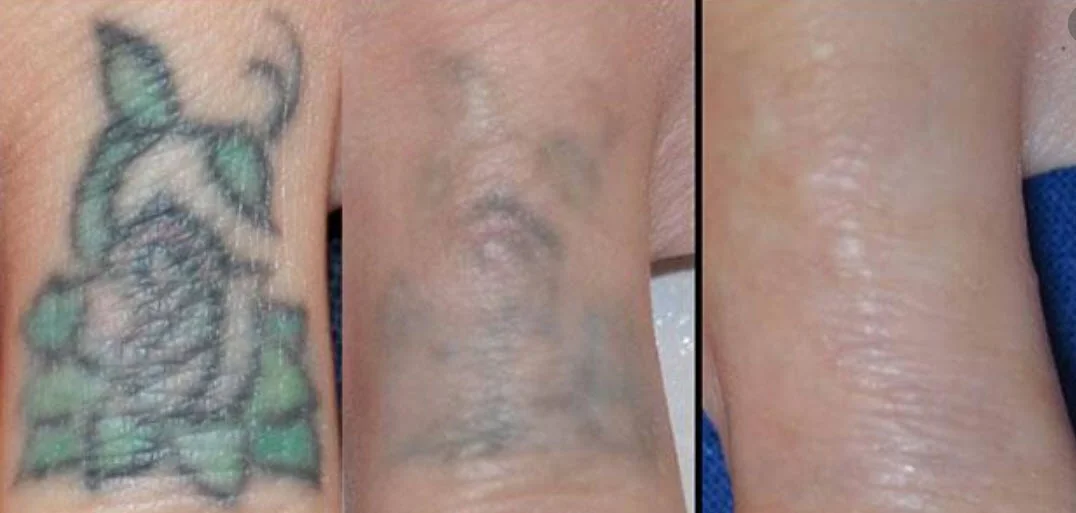
What is Surgical Excision of Tattoo and Skin Grafting?
Overview Surgical excision of a tattoo involves removing unwanted tattoos by cutting out the inked skin and closing the wound with sutures or performing a skin graft if necessary. This method is preferred for tattoos that cannot be removed by laser treatment or for large, deep, or older tattoos. Skin grafting is sometimes required when the tattoo covers a large area or if the surrounding skin cannot be sutured back together without tension.
Causes The need for surgical tattoo removal arises when individuals regret their tattoos or when tattoos interfere with their personal or professional lives. In some cases, allergic reactions to tattoo ink may also necessitate removal.
Solutions The excision procedure involves surgically removing the tattooed skin. If the tattoo is too large to close the wound directly, a skin graft from another part of the body may be used to cover the area. This technique provides a permanent solution to tattoo removal.
Types of Treatments

Simple Excision
Small tattoos are removed by cutting out the skin and closing the wound with stitches.

Excision with Skin Grafting
Larger tattoos require excision followed by the application of a skin graft to cover the wound.

Staged Excision
Large tattoos are removed in multiple stages, allowing the skin to heal between procedures.
Surgery Procedures and Recovery Time
Procedure The tattooed area is cleaned, and local or general anaesthesia is administered. The tattooed skin is then cut out, and the remaining skin is sutured together. For larger tattoos, a skin graft is taken from another part of the body and placed over the excised area. The area is bandaged to promote healing.
Recovery Recovery varies based on the size of the tattoo and whether a skin graft is needed. For smaller tattoos, recovery takes about 1-2 weeks, while larger areas or graft sites may take up to 4 weeks. Proper wound care and avoiding sun exposure are important for healing and minimizing scarring.
Video About Treatment
FAQ
Surgical tattoo excision involves removing the tattooed skin through surgery, often followed by stitches or skin grafting.
The procedure can take 1-3 hours, depending on the size and complexity of the tattoo.
The cost can range from ₹40,000 to ₹1,50,000, depending on the size of the tattoo and the need for skin grafting.
Risks include infection, scarring, and changes in skin colour or texture. Proper care minimizes these risks.
Recovery takes about 1-4 weeks, depending on the size of the tattoo and whether a skin graft is needed.